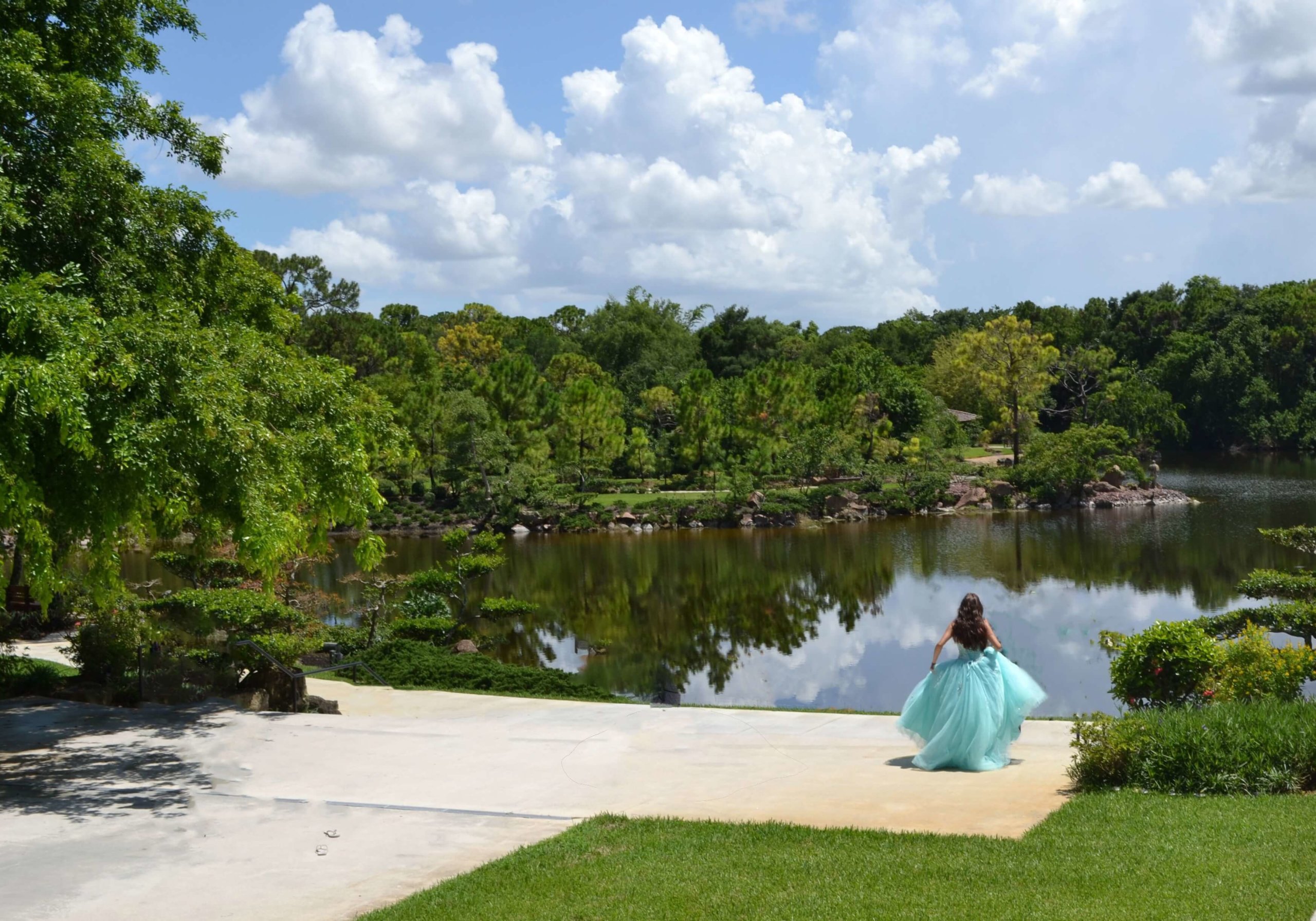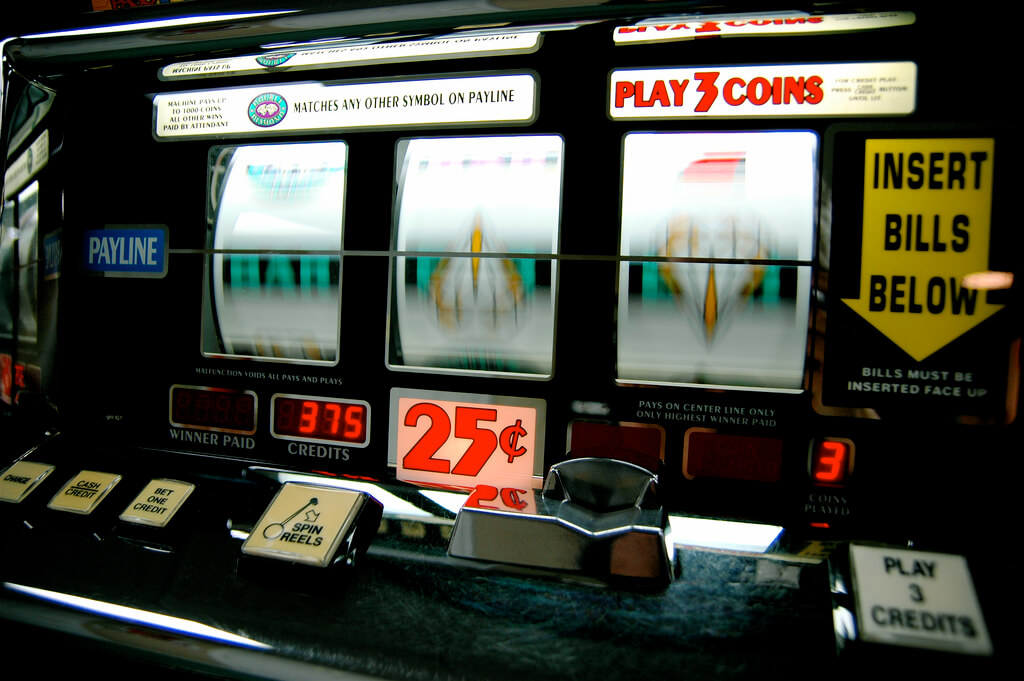Much of what takes us to the road, much of what makes us yearn for travel, is the feeling of exploration. It is, in essence, what travel truly is. After all, why would one go to the expense of a plane ticket, of leaving one’s home, of taking the risk of the unfamiliar if there weren’t a sense of wonderment in entangling with something new? However, the idea of exploration isn’t only for far-flung places, but also for the unrolled stones in one’s own back yard. This is what brought us to the Morikami Museum and Japanese Gardens in Boca Raton, Florida.
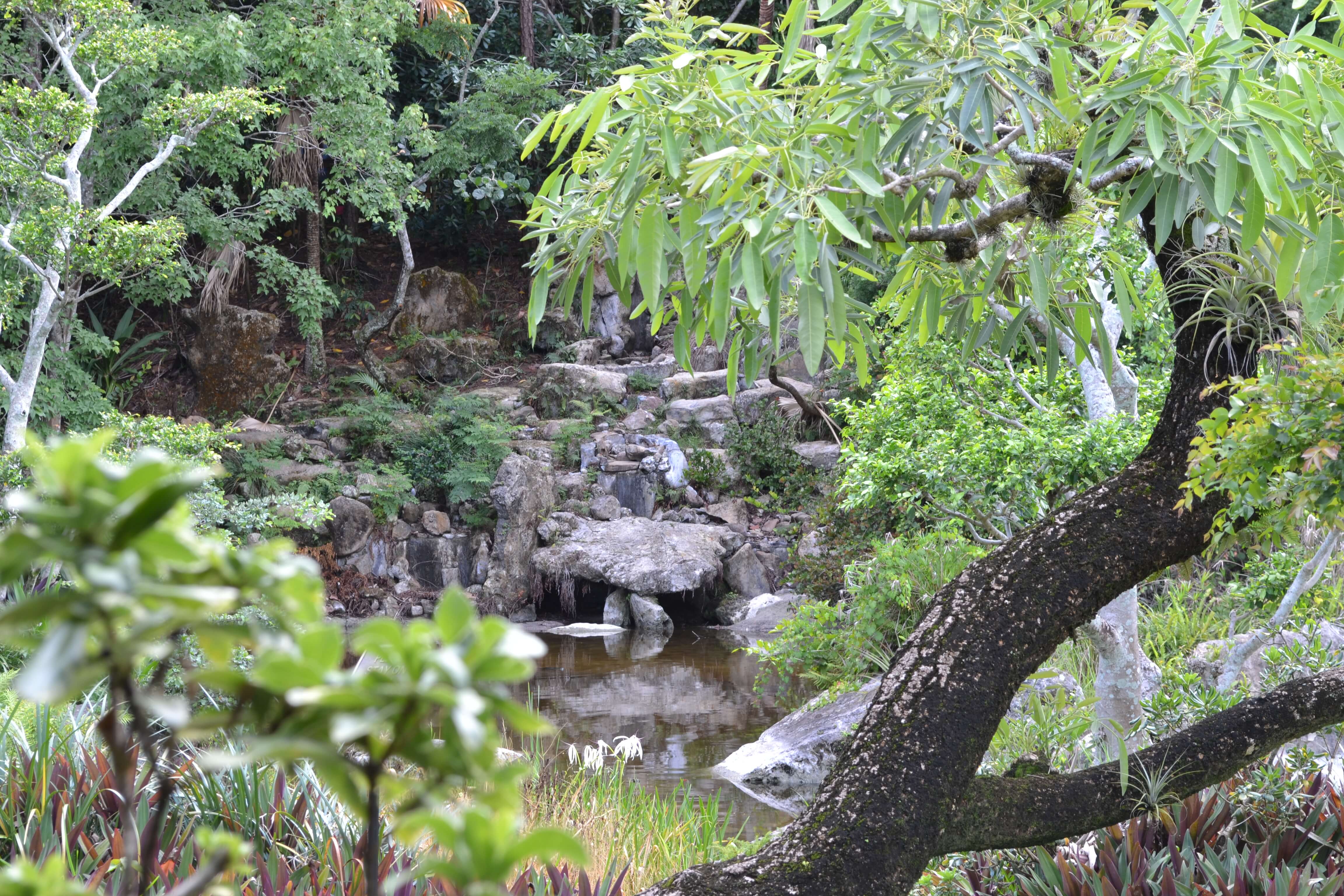
The serenity of Morikami.
Living central to South Florida gives us a wide reach of opportunities to explore when we’re not on the road, and traveling more deeply where you already live is something we deeply advocate. If you can’t travel as much as you wish or set sail on a whim, you can still explore. We try to live this way, and visiting the Morikami Museums and Japanese Gardens was one of the most peaceful, gratifying experiences we’ve had within earshot of our own home. It’s truly one of the best things to do in South Florida.
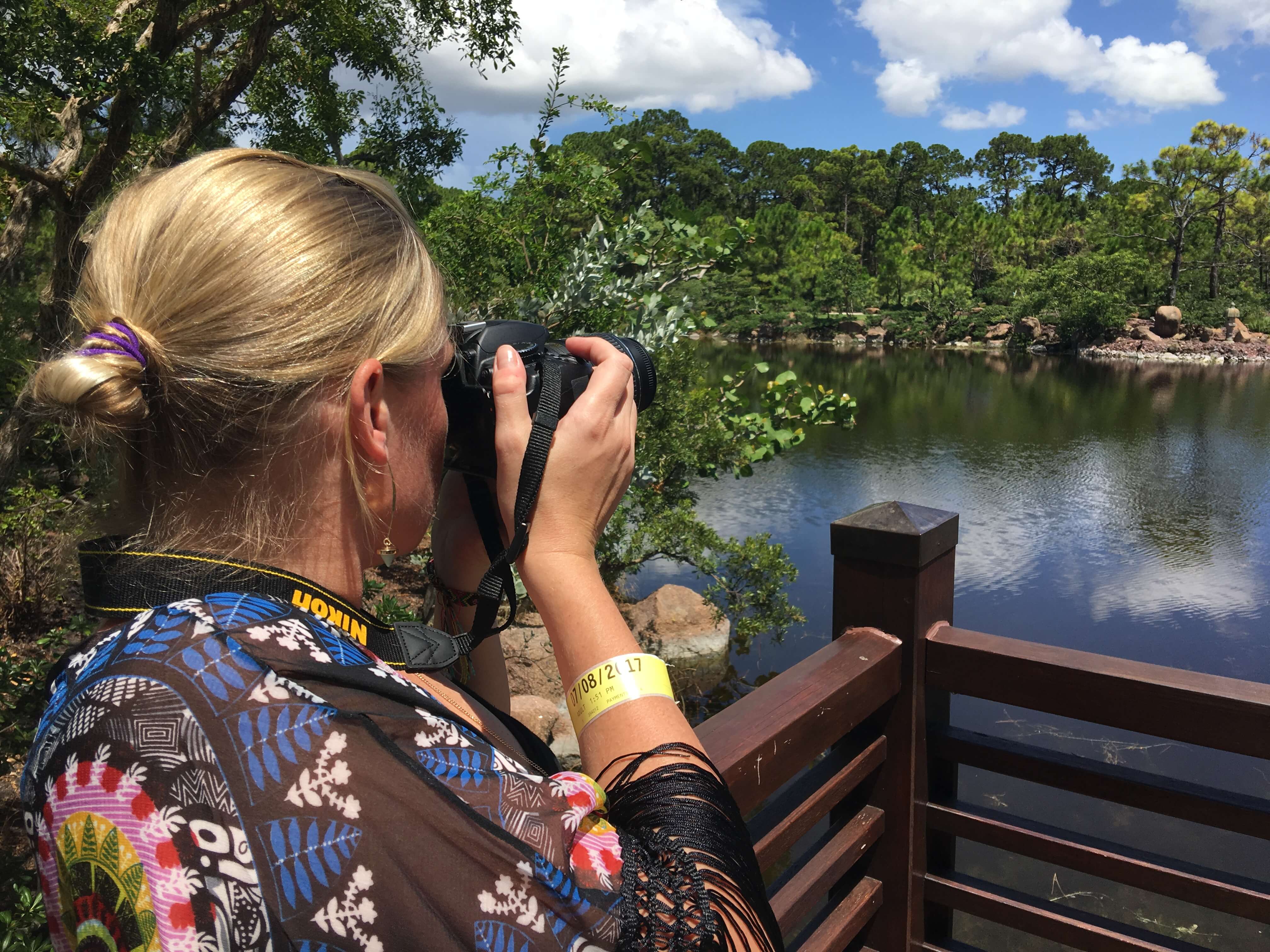
Morikami is ideal for photographers, or simply those who appreciate a beautiful, natural setting.
For those unfamiliar with South Florida, Boca Raton is in the northern-central part of the region – about halfway between West Palm Beach and Fort Lauderdale. A haven for corporations, chain eateries, retirees, and young families, Boca Raton is in many ways one of the most livable areas of South Florida. There are myriad excursions and activities, and for a long time we’ve known Morikami to be one. It was only until recently that we finally experienced it for ourselves.
The Yamato Colony
Morikami is a stunning, sprawling campus, far larger than we anticipated prior to visiting. It is here that visitors are surprised by the more than 100 year-old connection between Japanese culture and South Florida. In 1904, Jo Sakai, a recent graduate of New York University, returned to his homeland of Miyazu, Japan, to organize a group of pioneering farmers and lead them to what is now northern Boca Raton with the aim of revitalizing farming and agriculture in South Florida. With the help of the Model Land Company, a subsidiary of Henry Flagler’s East Coast Railroad, they formed a farming colony they named Yamato, an ancient name for Japan. The name Yamato still stands as a major road exiting from I-95 through the corporate sections of Boca Raton.
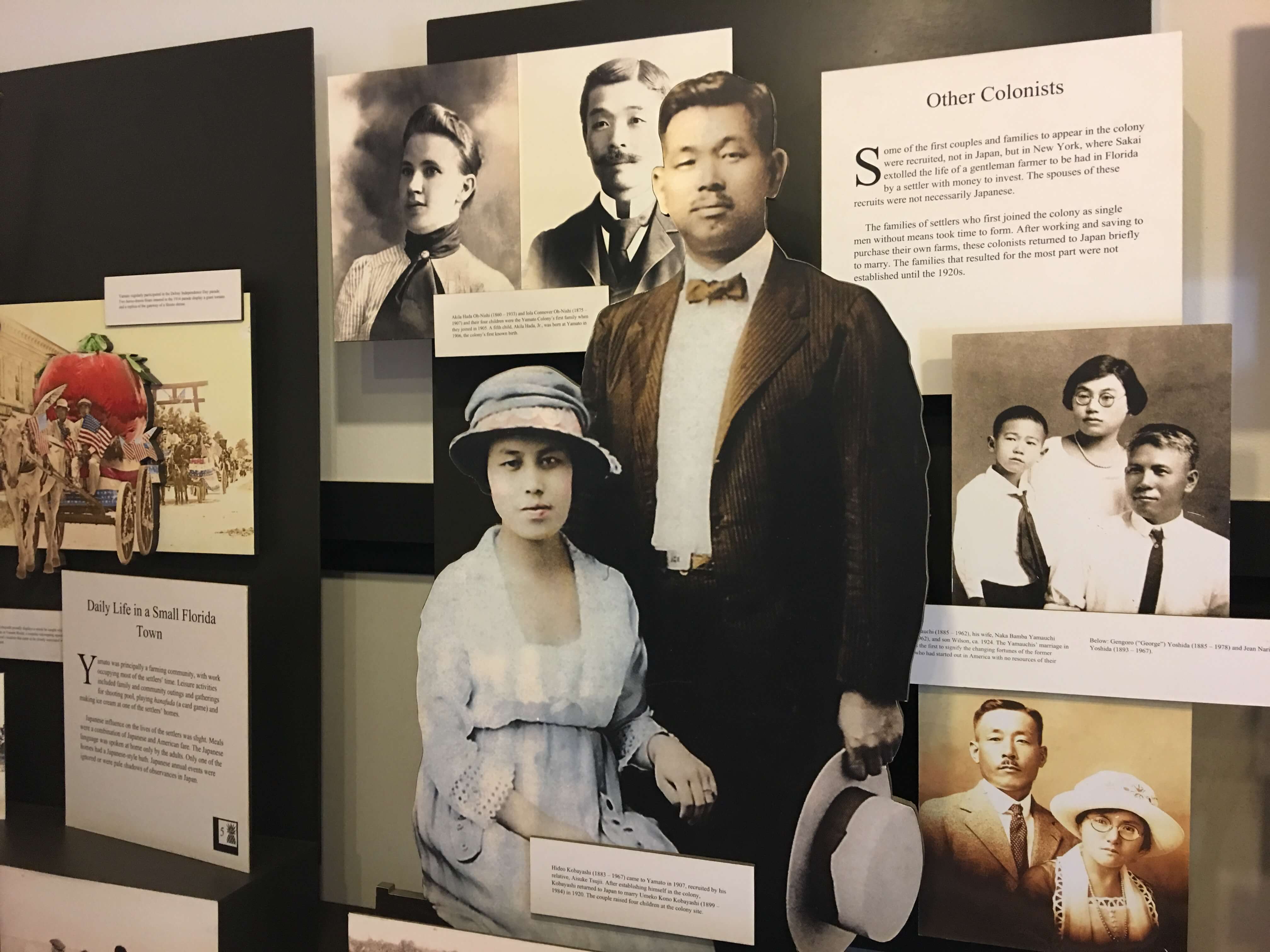
Part of the permanent display chronicling the history of the Yamato Colony.
Ultimately, the results of their experimentation failed, and the Yamato Colony had slowly drifted apart by the 1920s. Falling from a high of only 30 or 35 members, many either left for other areas of the United States to begin new lives, or return to Japan. It is here at Morikami where the fight remains to keep alive the memory of these early 20th century visionaries, who sought to bring beauty to South Florida.
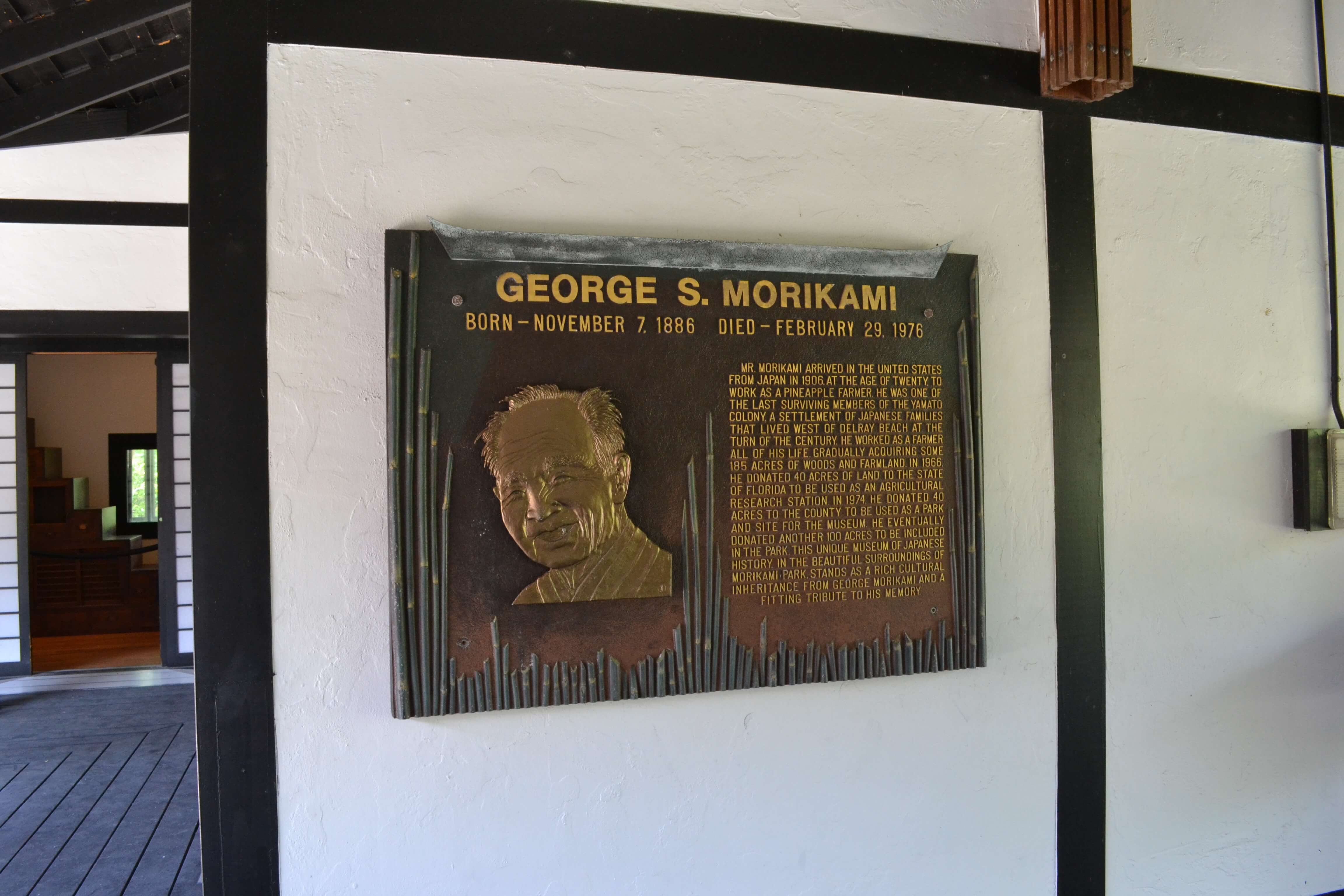
The Dream of George Morikami
Opening in 1977, Morikami is a stand-alone oasis of Japanese art and cultural preservation in South Florida. Featuring rotating, seasonal exhibitions, tea ceremonies performed monthly in the Seishin-an tea house, educational outreach programs, and Japanese traditional festivals celebrated regularly, Morikami excels at spreading appreciation for the living culture of Japan.
How did Morikami Museum and Japanese Gardens come to be? By the hand of one of the very colonizers who sought to bring this gift to South Florida at the outset – George Morikami. Morikami, the last remaining settler from that original group, who at the time was in his 80s, gifted the land to Palm Beach County in the mid-1970s with the request that it become a park to preserve the memory of the Yamato Colony. The 200 acres Morikami gifted now contain one of the most serene, beautiful, and inspiring settings in all of South Florida.
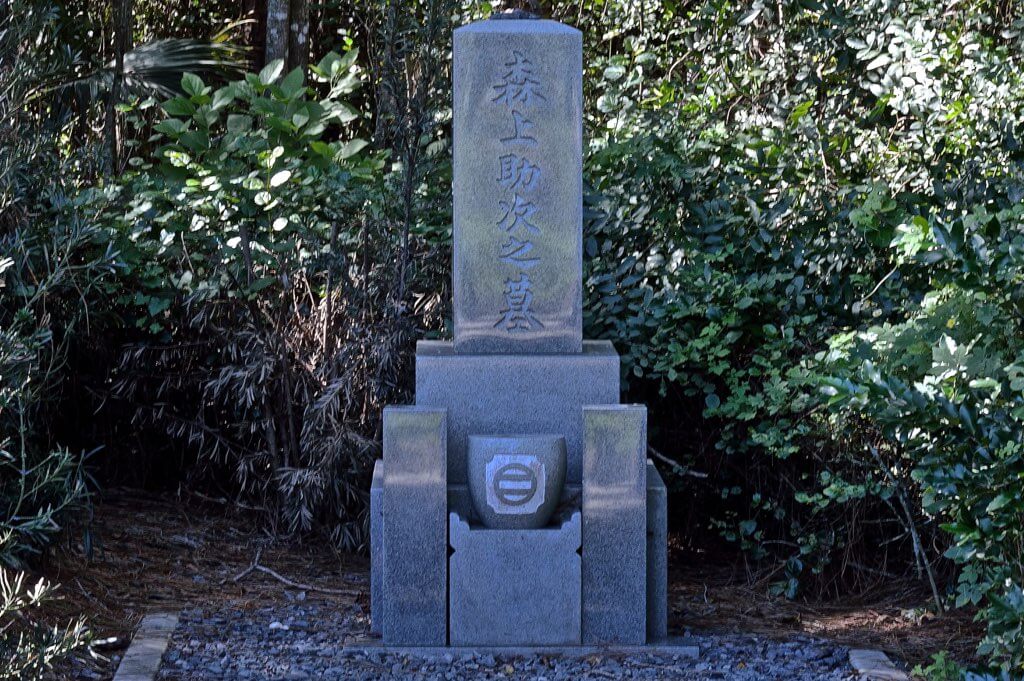
The permanent memorial to George Morikami.
Morikami and the MORY Program
If the goal was to bring the wonder and peace of the gardens of Japan to South Florida, Morikami succeeded. Upon entry, one is greeted by original Japanese architecture in the welcome center, where many of the indoor plays and attractions are held. Many of these programs are cultural in nature, certainly for education and appreciation, especially those put on by the MORY Program.
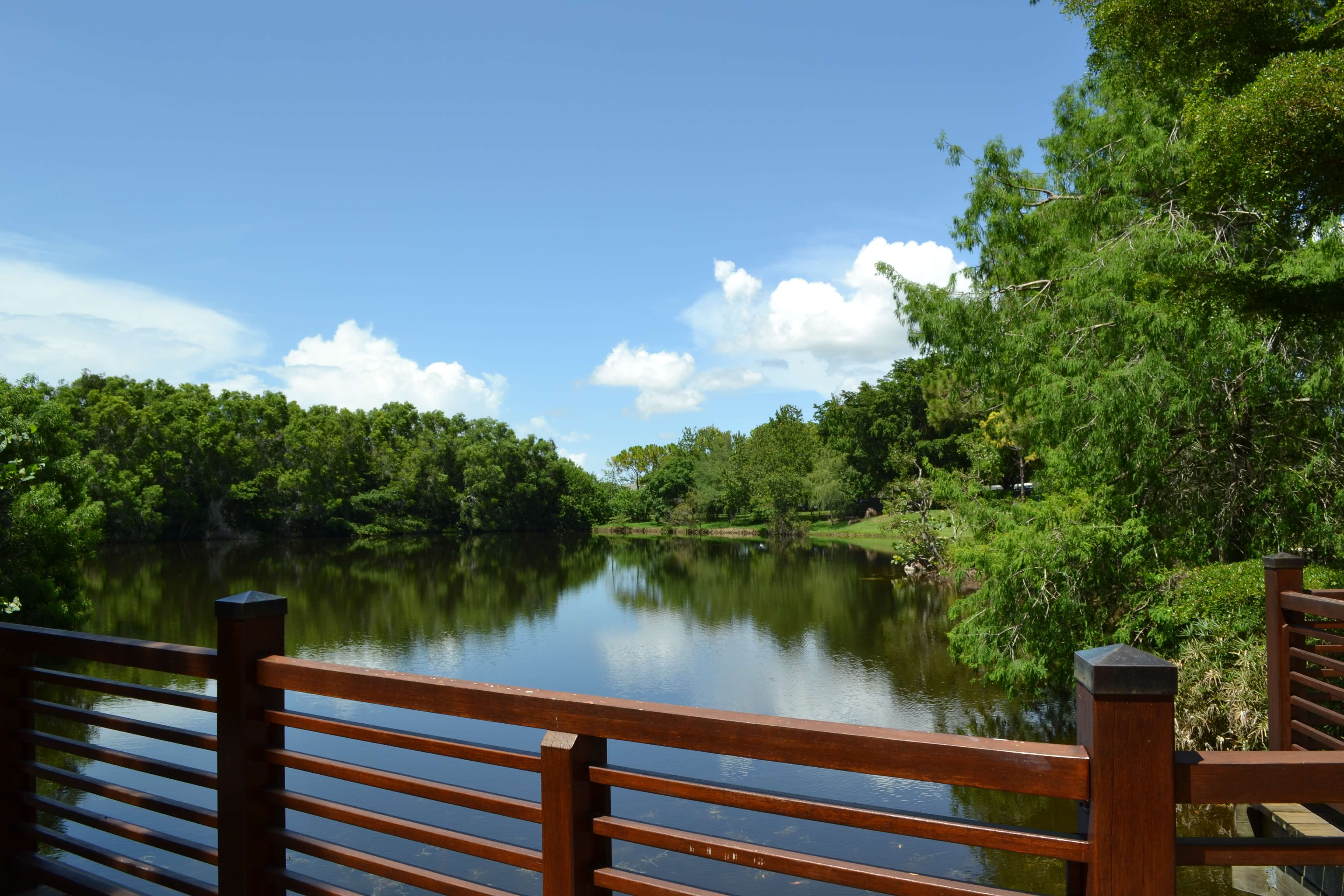
A bridge just after entry into Morikami.
This program (short for “More Opportunities to Reach Youth”) gathers children throughout South Florida for fun Japanese cultural activities throughout the summer. The grant-funded program invites groups of students from non-profit organizations to participate in Morikami’s Summer Tour Plus program, a two-hour experience including a guided tour of the museum and exciting activities, as well as the opportunity to explore Roji-en, Morikami’s expansive Japanese gardens. The interactive program introduces children of all ages to the museum’s Japanese art objects and artifacts.
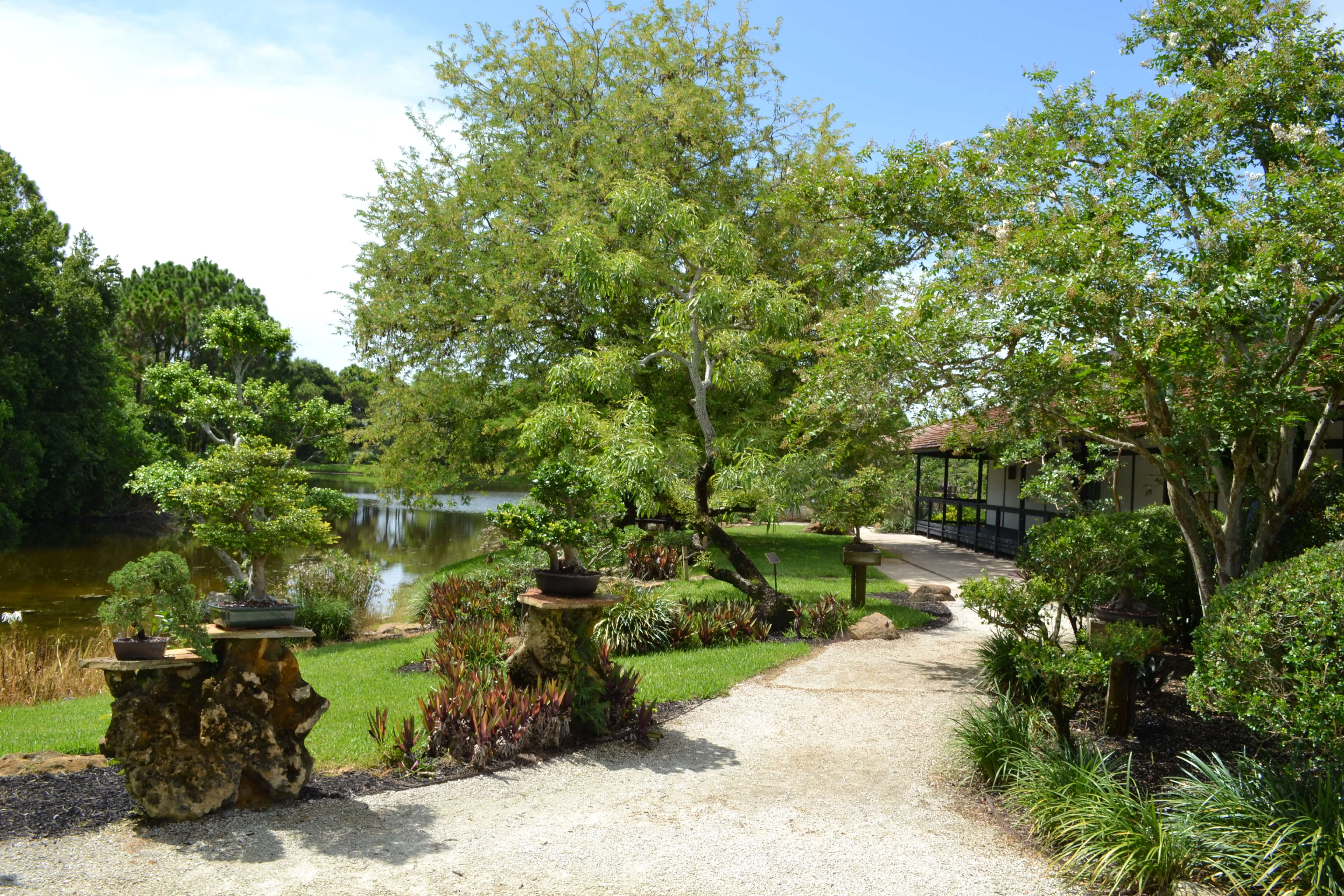
Lakeside on Yamato Island.
Yamato-kan and Exhibitions
Central to the campus is Yamato Island, the site of the original museum building, the Yamato-kan, a world-class bonsai exhibition, and two permanent exhibitions. You’ll be greeted by a large stone statue of Hotei, Morikami’s resident god of happiness who is placed to appear as an unexpected surprise for visitors walking rom the South Gate before they reach the Yamato-kan bridge.
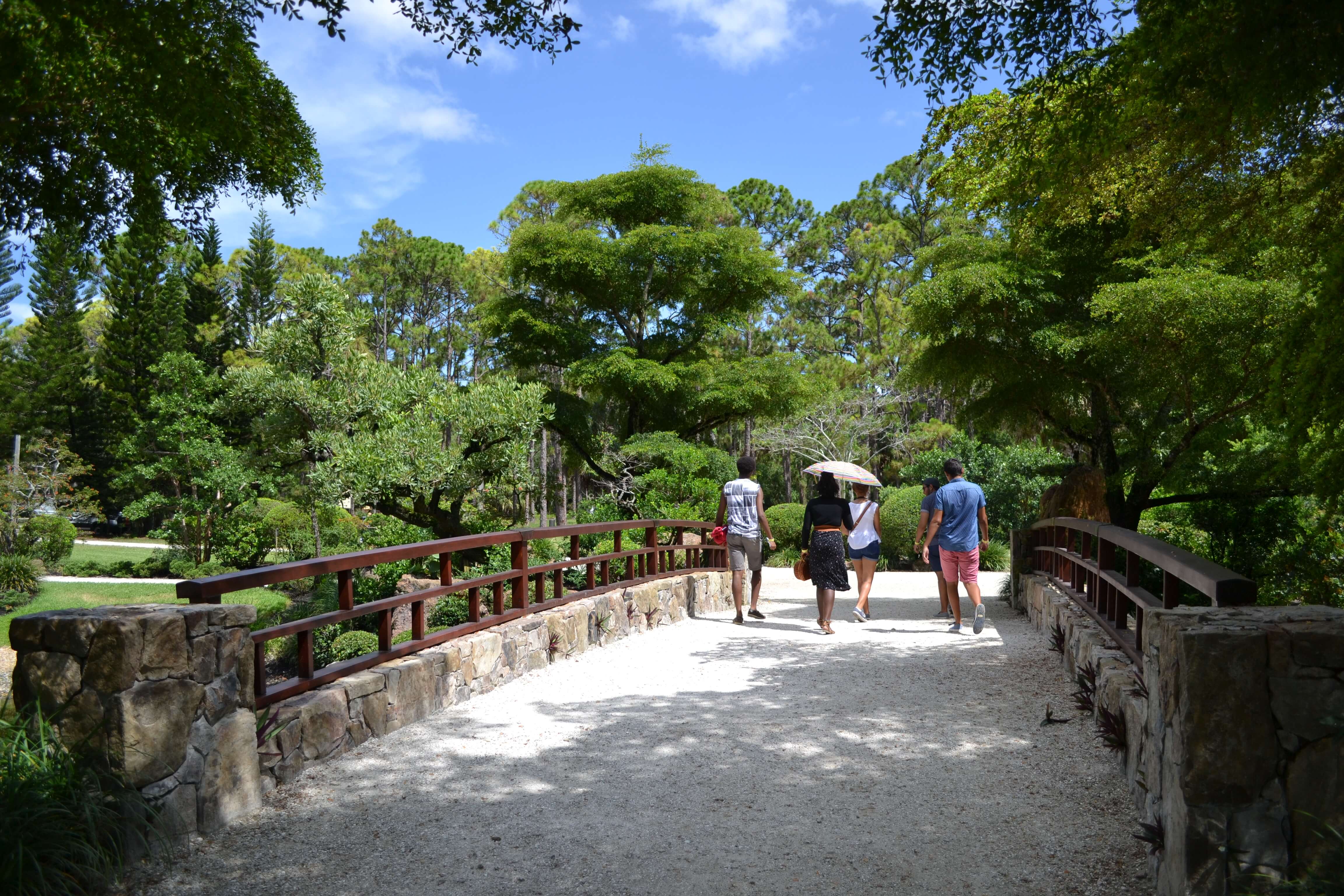
A stroll over Yamato-kan bridge.
The first of the permanent displays, called The Yamato Colony: Pioneering Japanese in Florida, honors the history of the Yamato Colony and the beginnings of what eventually become the ground for the gardens. Here you’ll discover the motivations behind those who came to South Florida with a grand idea and great passion, and set the wheels in motion for Morikami’s great gift.
Japan Through the Eyes of a Child transports visitors young and old to Japan, allowing them to step into the world of contemporary Japanese culture. Here you can explore daily life in Japan for its youth, from waking and attending school, to meals at home, and board the famed Shinkansen bullet train. There is a full-scale replica of a typical Japanese kitchen, include made tables for family meals, as well as exhibits displaying a common Japanese elementary classroom.

Central to Morikami is the permanent display of life as a young student in Japan.
Also on Yamato Island is the Morikami Bonsai Collection. Literally meaning “tree in a tray,” Bonsai are trees or groupings of trees artistically shaped and cultivated in a container to take on appealing shapes that is unique to Japan. Morikami’s bonsai collection, showcased at the Dr. Ron and Arlene Kessler Walk, is one of three displays to be named a World Bonsai Friendship Federation (WBFF) Cooperation Center, a designation reserved for the world’s best public bonsai exhibits.
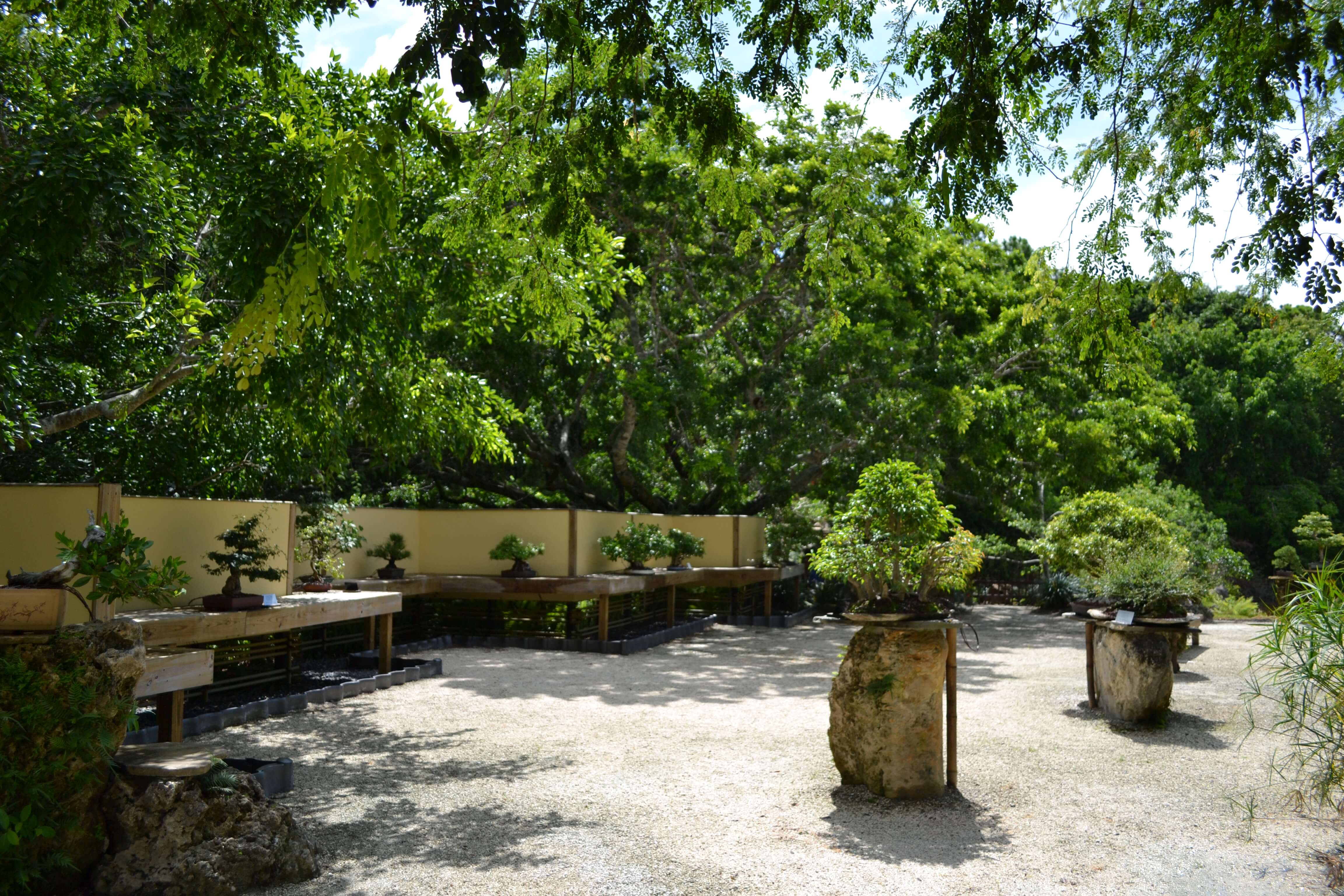
Morikami offers a world-class Bonsai display.
Lastly, you’ll want to enjoy Yamato Island Garden and the Koi Pool & Kameshima (meaning “Turtle Island”). In East Asian lore, turtles are said to live 10,000 years and are commonly emblemized on Japanese Islands with stone and wood cuts representing longevity. Here at Morikami, the Kameshima is a favorite basking spot for the many turtles that call the grounds home.
Roji-en, the Gardens of Morikami
For us, the real draw at Morikami are the gardens, called Roji-en. Meaning “Garden of the Drops of Dew”, these gardens were designed to be a living exhibit complementing the museum. Designed by Hoichi Kurisu, the six distinct gardens are inspired by, but are not replicas of, famous gardens of Japan.
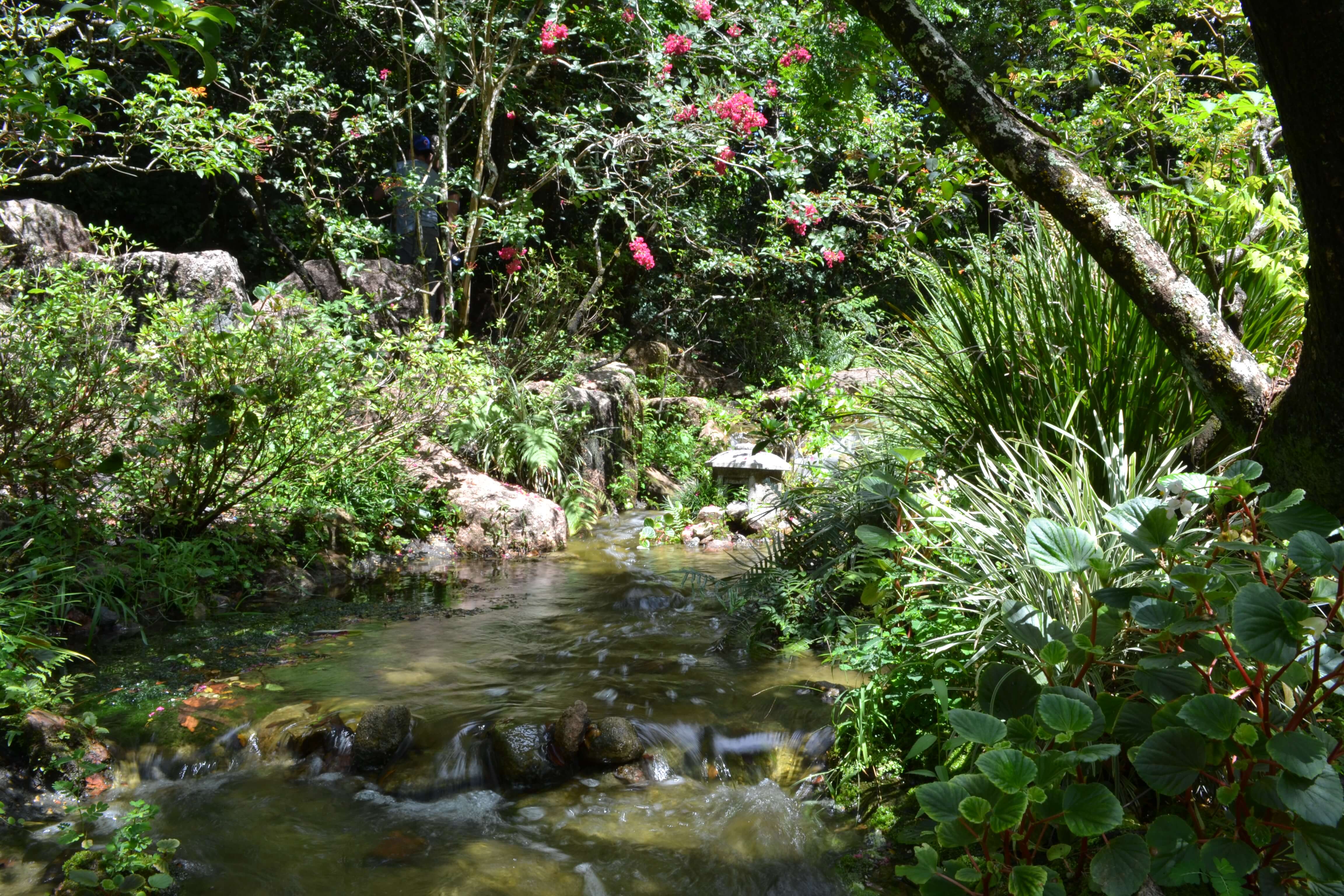
Beauty over a babbling brook.
Kurisu’s aim was to take visitors away from modern society, if even for a moment. To take us away from the trappings of a boxed-in, materialistic world and if only for a fleeting day return us back to the beauty of the natural world. Designing with the skill and touch of a master, he says of the gardens;
My hope is that a visit to the gardens will genuinely and deeply touch each individual’s life. My hope is that progressive ideas will be born and that action will take root here, that the intuitive conviction of such enduring qualities as beauty, love, health and wholeness, integrity, creativity, renewal, and selflessness will be strengthened.
The six gardens, each uniquely themed and designed as a continuous ring around the complex, allow the visitor to flow around the campus in a state of utter awe. They move you chronologically through the last 1,100 years of Japanese master design, beginning with the Heian Period (9th – 12th century) and ending Meiji Period, which lasted from the early 19th century to the time of the Yamato Colony, themselves.

The Heian Period reflects Japanese nobility, who adapted Chinese garden design ideals that featured lakes and islands, emphasizing informality and appreciation of nature. Such gardens were usually viewed from a boat, as zigzaging bridges carry the visitor over the water. It is here where you begin your visit after stepping down from the primary visitors’ center.
As you continue around the main lake in the center of the gardens and museums, which contain Yamato Island, you are in fact walking in a time capsule of Japanese design. After leaving the area of the Heian, you’ll venture into the Kamakura of the 13th and 14th centuries. An earthly representation of the Pure Land, or Buddhist heaven, such gardens were the first intended for strolling and provide a picturesque setting for photophiles and shutterbugs who want to take advantage of the serene warmth of this garden.

The Early Muromachi Period is central among the gardens, and takes on a feeling of art come to canvas from nature, to be returned back from where it came. The area is inspired by the 14th century Chinese style that typified landscape paintings in ink that depicted water cascading from distant peaks into the sea or a lake. It is a stunning setting, making use of the dry cascades that inspired some of the original zen gardens.
From here, and prior to the Meiji-inspired garden, you’ll find yourself in the flat rock gardens of the Edo Period. Called the Hiraniwa Flat Garden. In Japan, the flat garden was a mostly secular residential garden type which also appeared adjacent to some temple residence halls. Most typical of the 17th – 18th centuries, flat gardens consciously combined features of the late rock garden with others adopted from the tea garden to form a wonderfully breathtaking stroll in the latter portion of the gardens of Morikami.
Cornell Cafe at Morikami
Morikami takes some time to explore properly, and you’ll want to plan accordingly when it comes to food. Being in the setting of unique and authentic Japanese beauty will make you want some authentically delicious in the same vein, and the Cornell Cafe will not disappoint.

The sushi was as good as it looked!
Either starting or ending your day here, the Cornell Cafe offers real Japanese delicacies including Sushi, Sashimi, Bento Boxes, Gyoza, Unagi, and even Sapporo beer. If you’re with a group, we recommend getting varied dishes, as most of what is on the menu is easy to share and all delicious.
The Best of South Florida – Morikami Museum and Japanese Gardens
Morikami is an oasis in a busy beach metropolis, and a much-needed break from the hurried modern life. The story of the Yamato Colony and George Morikami is captivating, and the grounds themselves bring from the visitor the brightness within each of us.
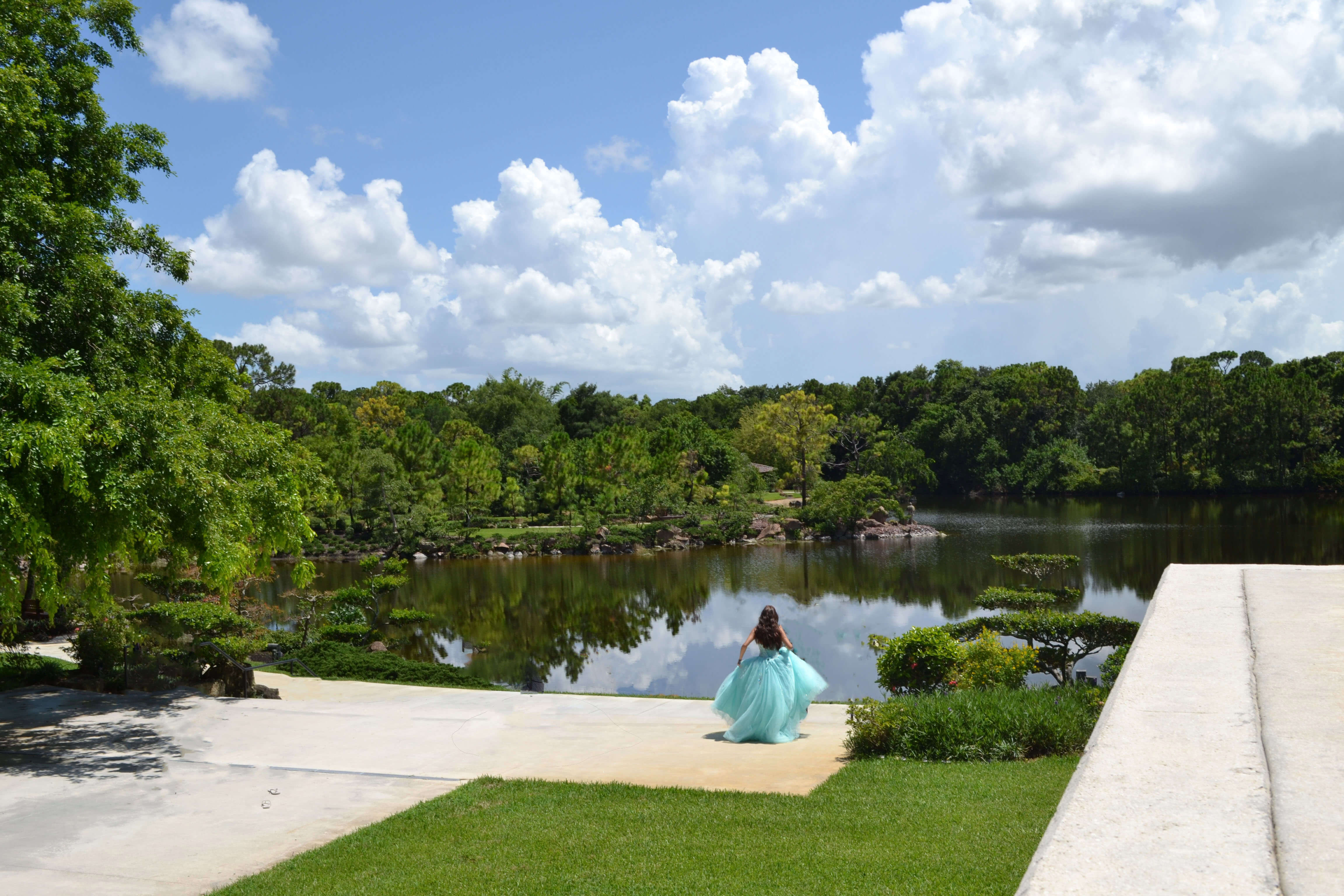
We couldn’t have been any luckier than to catch this perfectly-timed shot, as Morikami hosted a small party during our visit.
Leaving Morikami, you’ll feel as though you’ve truly traveled – even if you live next door. Truly the accomplishment of Morikami’s vision was executed flawlessly, as the beautiful grounds take you out of South Florida and into another place in another time. If you can’t go to Japan, go to Morikami, where Japan is brought to you.

